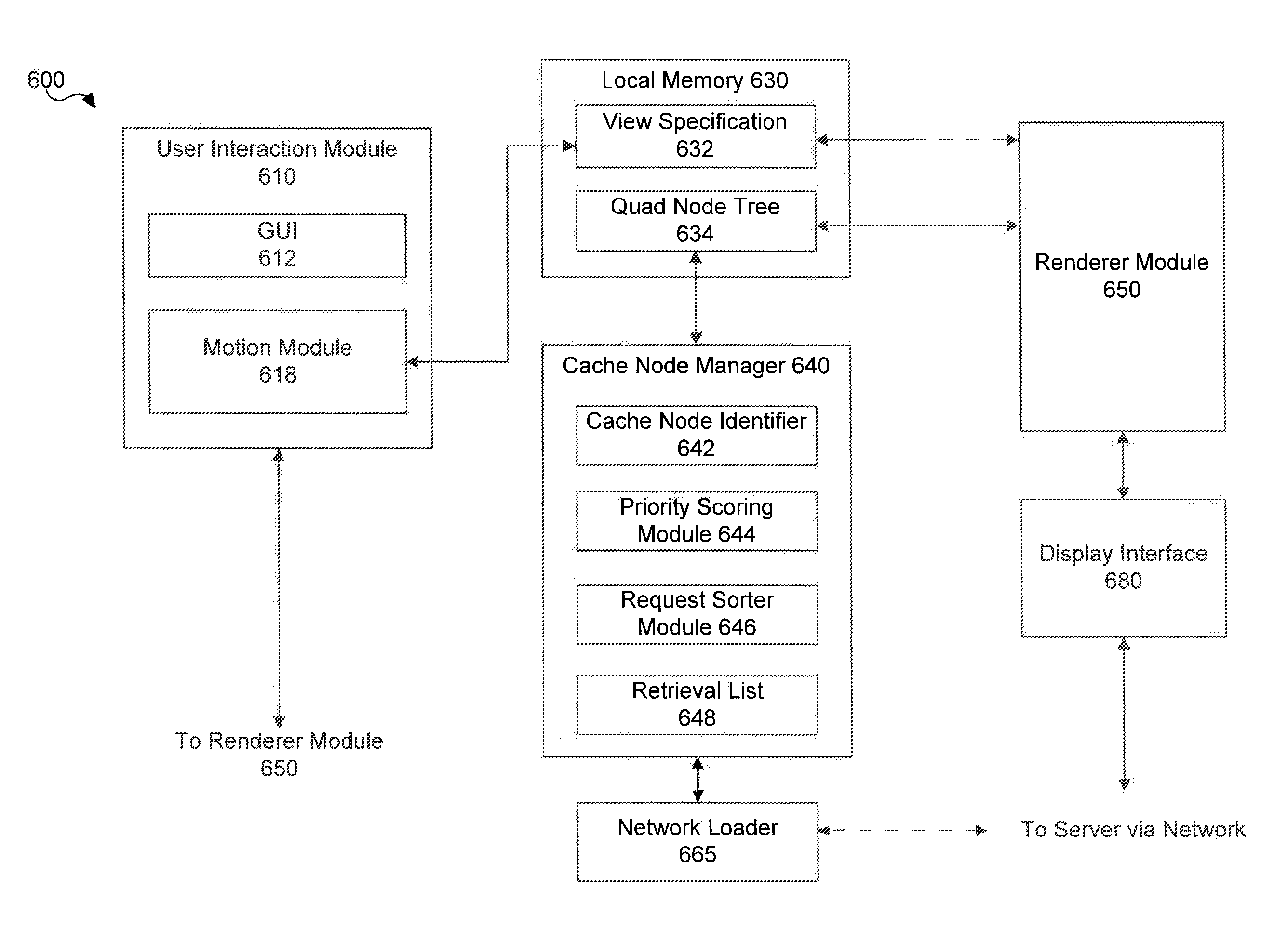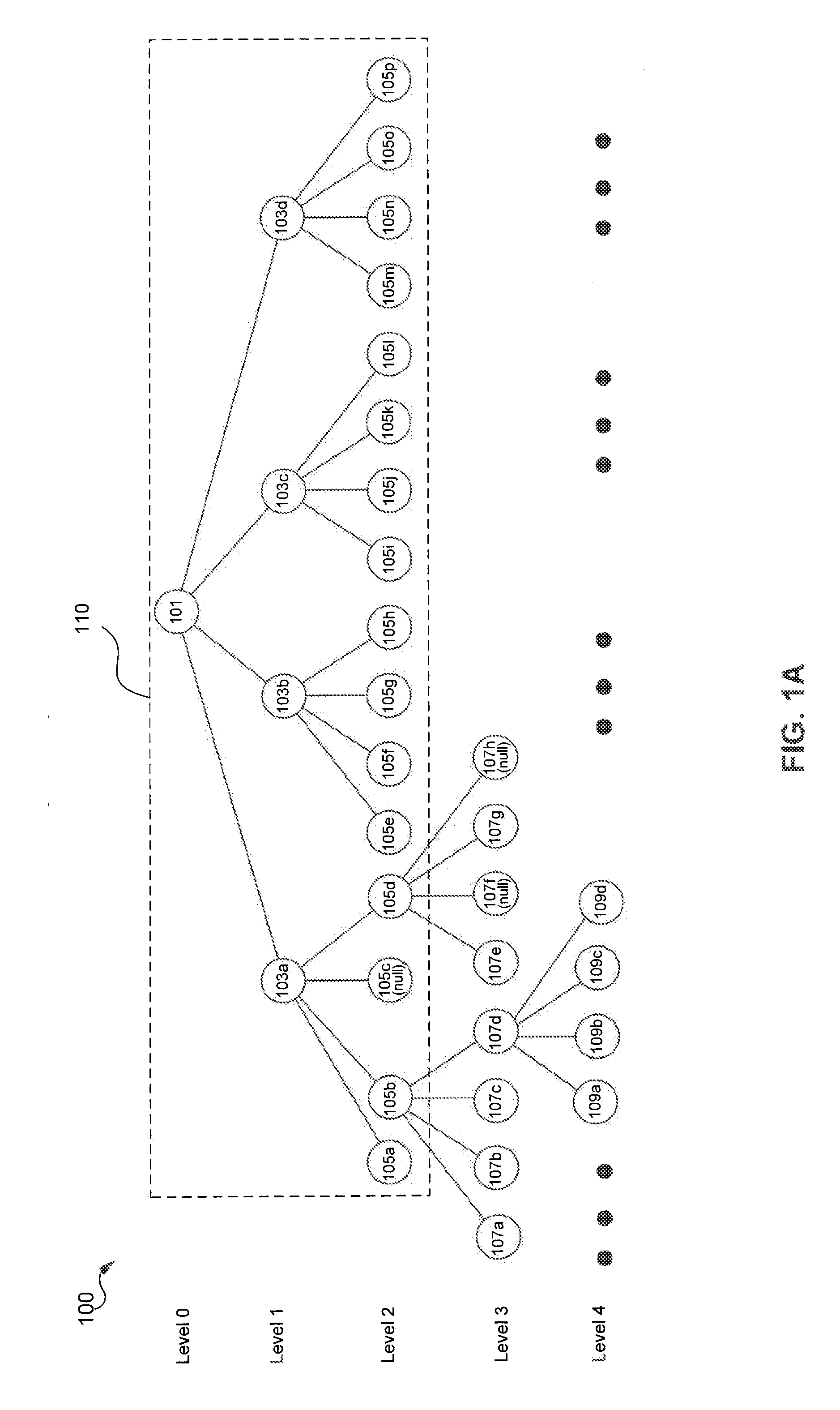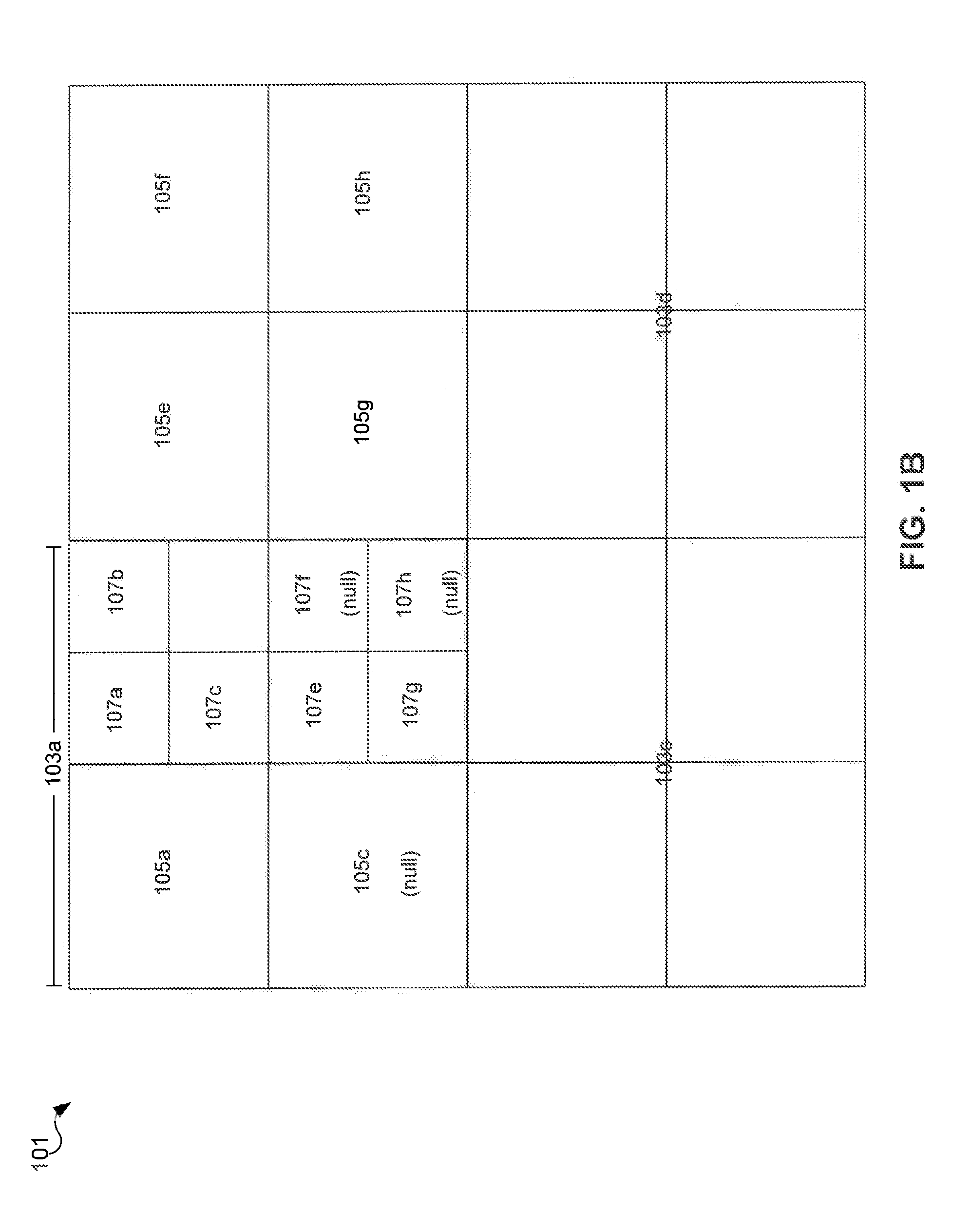Prioritizing Node Requests Based On Tile Distance To Reduce Perceptual Scene Time
a tile distance and node technology, applied in the field of geoinformation systems, can solve problems such as the inability of clients to request all data, and achieve the effect of reducing user-perceived scene resolution tim
- Summary
- Abstract
- Description
- Claims
- Application Information
AI Technical Summary
Benefits of technology
Problems solved by technology
Method used
Image
Examples
Embodiment Construction
[0020]I. Overview
[0021]II. Quadtrees[0022]A. Tree Representation[0023]B. Grid Representation
[0024]III. Cache Node Priority Score[0025]A. Geographic Distance[0026]B. Tile Distance[0027]C. Cache Node Types[0028]1. Types of Cache Nodes[0029]2. Examples of Cache Node Constraints[0030]3. Offsets[0031]D. Primary and Secondary Factors
[0032]IV. Exemplary Client Architecture
[0033]V. Exemplary Method
[0034]VI. Conclusion
I. OVERVIEW
[0035]This description generally relates to data packet prioritization in a three-dimensional environment. A client may display a view of the planet by requesting cache nodes from a server and loading the cache nodes. In an embodiment, a client may order cache node requests before they are sent to a server based on a priority score associated with the cache node. The priority score indicates a priority of the cache node relative to other cache nodes. The cache nodes may be ordered such that data which visually matters to a user is fetched first. A priority score may ...
PUM
 Login to View More
Login to View More Abstract
Description
Claims
Application Information
 Login to View More
Login to View More - R&D
- Intellectual Property
- Life Sciences
- Materials
- Tech Scout
- Unparalleled Data Quality
- Higher Quality Content
- 60% Fewer Hallucinations
Browse by: Latest US Patents, China's latest patents, Technical Efficacy Thesaurus, Application Domain, Technology Topic, Popular Technical Reports.
© 2025 PatSnap. All rights reserved.Legal|Privacy policy|Modern Slavery Act Transparency Statement|Sitemap|About US| Contact US: help@patsnap.com



